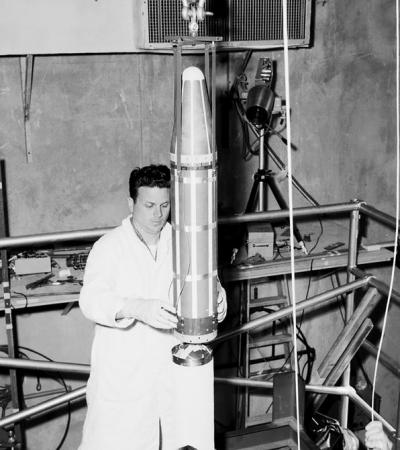Dr. Wernher von Braun led the Army Ballistic Missile Agency (ABMA) team at Redstone Arsenal in Huntsville, Alabama, that designed the rocket that launched Explorer 1. After the satellite was confirmed to be in orbit, he characterized the event as a crucial beginning for the nation's space program.
“We have firmly established our foothold in space," von Braun said. "We will never give it up."
Plans to orbit a satellite were part of IGY, a scientific collaboration of 67 nations taking place from July 1, 1957, to Dec. 31, 1958. Both the U.S. and Soviet Union announced that their participation would include launching satellites to orbit the Earth.
Even with the advance declaration, many Americans were stunned when the Soviets launched the world's first satellite, Sputnik, on Oct. 4, 1957. A month later, Sputnik 2 orbited with a dog as a passenger.
Plans to launch an American satellite began in 1954 and despite strong advocacy from the ABMA, the Eisenhower Administration chose the U.S. Navy’s Vanguard project to lead the nation's efforts for the IGY. However, the first attempt to orbit a Vanguard satellite ended in a launch pad explosion on Dec. 6, 1957.
Continue here to read the full article by NASA || January 31, 2018 |||





